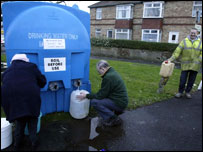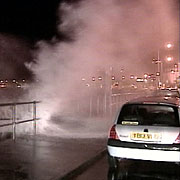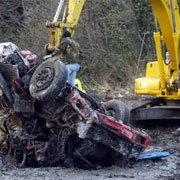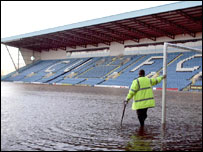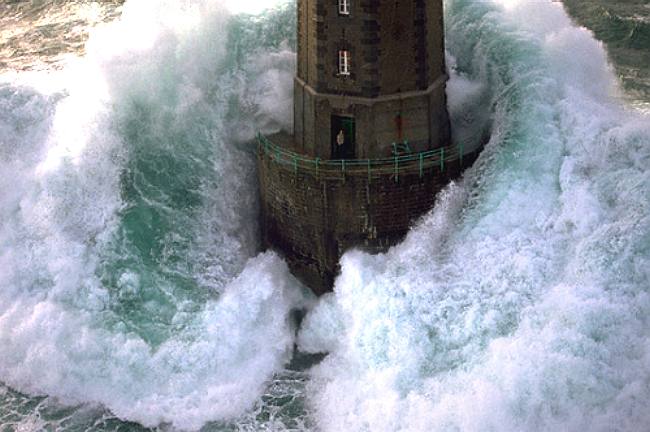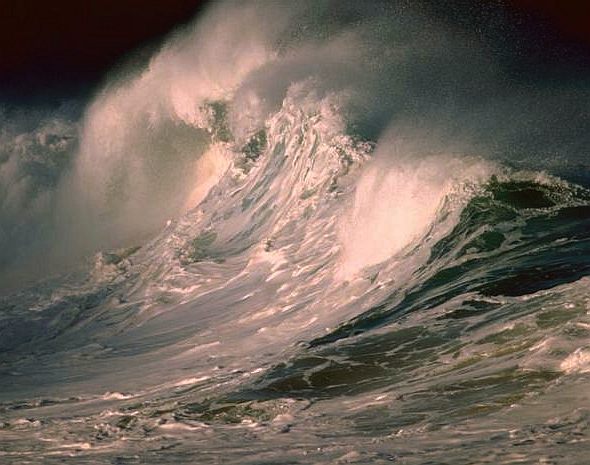|
STORMS - Tuesday January 11, 2005
|
||||||
|
HOME | BIOLOGY | BOOKS | FILMS | GEOGRAPHY | HISTORY | INDEX | INVESTORS | MUSIC | NEWS | SOLAR BOATS | SPORT |
||||||
|
According to the Worldwatch Institute, in 1998 alone, severe weather caused more than 30,000 deaths and close to
$90 billion in damage. Hurricanes ravaged coastlines, tornadoes plowed through the United States with record force, and rain battered crops and left Do you have what it takes to be a storm chaser? Identify tornadoes and other weather events in this activity. millions of people homeless worldwide. What causes such severe weather? Can we prepare ourselves for these disasters?
UK BRACES FOR STORM FORCE GALES
Several
parts of the UK are being hit by severe weather,
with strong winds and flood warnings in place.
More than 3,000 people are already without power
in Scotland after parts of the country were hit
by storms. The Met Office has issued
severe gale warnings for Northern Ireland,
northern England, and Scotland. With
possible widespread damage to trees and
buildings and coastal flooding at high tides, it
warned against unnecessary travel.
Scotland was likely to be hit by winds of up to
100mph, the Met Office warned. The
Scottish Executive has been advised by the power
firms that electricity supplies to 35,000 people
could be disrupted. Meanwhile, up to
10,000 homes in Hexham, Northumberland, lack
running water for a fourth day due to weekend
storms.
The
Environment Agency has issued flood warnings for
several areas. During the weekend, three people
were killed and two went missing after
torrential rain and gales swept north England
and elsewhere. Thousands of people were
evacuated from flood-stricken Carlisle, in
Cumbria, and are unable to return home after
adverse conditions at the weekend. About 3,000
homes across the county are still without
electricity.
In
a statement to the House of Commons, Environment
Minister Elliot Morley told MPs local
authorities could claim financial help for the
clear-up following the recent floods. He
paid tribute to emergency services who helped
flood victims cope in the aftermath of
"truly exceptional amounts of rain"
and offered his condolences to the family of
those who lost their lives.
Cruise liner caught in a tsunami
Winds of up to 124mph have been lashing parts of the UK, killing three drivers and leaving thousands of people without power. The brunt of the bad weather was felt in Scotland, where 60,000 people were without electricity after gales sent trees and telegraph poles toppling.
Northern England and Northern Ireland were also badly hit by the high winds, which blew over two trucks, claiming the lives of two motorists. One lorry toppled off the Foyle Bridge in Londonderry, onto the banks of the River Foyle.
The A1 from Edinburgh to Newcastle was closed north of Berwick after a collision involving a lorry and a car. The car driver, a man, was pronounced dead at the scene of the crash, which happened near Eyemouth. The lorry driver suffered minor injuries.
Warnings of high winds prompted Sellafield nuclear plant in Cumbria to send home hundreds of office staff until Thursday. Buildings at the plant suffered external damage from weekend winds.
BBC
Weather forecaster Tori Good said: "Winds
gusting up to 100mph have been forecast, with
the most intense storm-force winds likely to
batter the north coast of Northern Ireland and
north-west Scotland." "Even
areas further south could be at a significantly
high risk too," she added.
Another
driver was killed when his articulated vehicle
was blown off Foyle Bridge in Londonderry. In
Tayside, a van driver died when his vehicle and
a lorry were in collision on the A90.
The northwest of Scotland and the Scottish islands are taking the brunt of the weather. Gusts of 124mph were recorded on North Rona, while winds reached 105mph on Barra, both in the Western Isles. Around 10,000 homes in the Northumberland market town of Hexham were left without water.
Lorry blown off Foyle Bridge Londonderry
FLOOD WARNINGS
Air and rail travel are expected to be affected by the strong gusts on Tuesday and trees are expected to be blown down. On Tuesday afternoon, four flood warnings were in place in England and Wales, together with an additional 40 flood watches. And the Scottish Environment Protection Agency has issued 12 flood warnings, as well as 18 flood watches. Ms Good added: "The worst of the stormy winds are forecast to take their grip through Tuesday afternoon and evening.
Improving conditions
"Gales lasted through the night, especially in the northern half of the UK which will stay very windy with further gales the next day." The problems in Hexham were caused after two water mains supplying the town and surrounding areas were washed away. A spokeswoman for Northumbrian Water said some supplies would be restored by Wednesday and the rest by Friday. Householders in northern Wales were hit by flooding and strong winds at the weekend.
Call the Environment Agency's Floodline for flood warnings - 0845 988 1188.
City Under Water Your Flood Stories In pictures: Carlisle floods
Carlisle United's Brunton Park flooded pitch
THUNDER
and LIGHTNING
STORM UK LINKS :
SABC Northern Britain faces gale battering - 43 mins ago Guardian Unlimited Lorry driver feared dead in gales - 2 hrs ago Daily Express Lorry Driver Feared Killed In Gales - 3 hrs ago Daily Mail Driver feared dead after lorry blown from bridge - 3 hrs ago Irish Times Storm warnings issued as gales of 100 mph forecast - 17 hrs ago * requires registration
SEE ALSO:
Storm
knocks out power supplies North
still fighting flood effect Severe
storms set to hit Scotland In
pictures: Storm sweeps UK 'No
quick fix' to flood problem
RELATED BBC LINKS:
RELATED SERVICES LINKS:
Perfect Storms
A stormy adventure by Jameson Hunter
Pirate whalers vesus conservationists trying to save a wounded whale
|
||||||
|
This website is Copyright © 1999 & 2012 NJK. The bird logos and name Solar Navigator are trademarks. All rights reserved. All other trademarks are hereby acknowledged. Max Energy Limited is an educational charity. |
||||||
|
AUTOMOTIVE | BLUEPLANET BE3 | ELECTRIC CARS | ELECTRIC CYCLES | SOLAR CARS | SOLARNAVIGATOR | UTOPIA |
